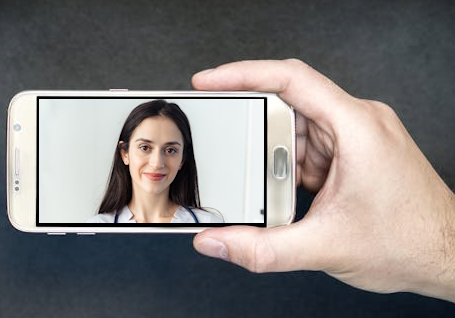The good old days
Once upon a time, face-to-face consultations were the norm. The concept of remote consultations or telemedicine lingered in the background, used mostly in the form of telephone consultations. As clinicians, my colleagues and I, favoured the traditional, in-person interactions with our patients. Our training and expertise were grounded in these personal exchanges, where a handshake was as customary as a stethoscope.
The pandemic hits

Then came the COVID-19 pandemic. It necessitated a fundamental shift in how we delivered healthcare. Initially, we transitioned into doing telephone consultations, a significant departure from our usual practice. We didn’t know how long the pandemic was going to last. There was also no way to do face-to-face consultations without risking the entire healthcare workforce. This pivot required us to adapt quickly, and learn to assess and manage patient needs without their physical presence.
No-one was going to work in those days except for essential staff; so-called key workers. The roads were empty. I kept a letter from the practice in my car in case I was stopped by police to explain why I was driving. It was surreal. There was an eerie atmosphere in the clinic with an empty waiting room and silent telephones. This lasted for the first 2 weeks and then the calls started to come.
A new way of working

Patients did their best to explain their symptoms on the phone. And we healthcare workers did our best to understand them. It was uncomfortable for both the patients and us. We were not trained to assess and diagnose disease on the telephone and it increased our clinical risk. Mistakes were undoubtably made.
Progressing from phone calls, we started to use the first of the telemedicine facilities. We had software with which patients could send us photographs. This method proved particularly useful for skin conditions. It allowed us to see zoomed-in, detailed views of all manner of rashes on the computer screen. We also gained the ability on our NHS EMR to do video consultations. Great in theory but, in practice, the NHS would not provide us with webcams for another year. So I bought my own from Amazon at any inflated price. That was as a result of supplies running short across the World as working from home became the norm. The transition to video consultations marked a further evolution. It enabled me to observe patients in real-time, enhancing my diagnostic and therapeutic capabilities. I found it most useful for musculoskeletal cases. The video allowed me to see swelling, lumps, deformities and assess range of joint movement.

The right software is crucial to telemedicine
I knew right at that moment that there was no going back. Patients and healthcare staff would not give up this method of consultation lightly. For providers, telemedicine improved their efficiency and expanded reach of their services. Recognising these benefits, the NHS has integrated telemedicine into its routine operational framework. This signifies a long-term commitment to this mode of care delivery.

However, the transition revealed a gap in the digital infrastructure of PRIVATE practices. The telemedicine software at the time just wasn’t intuitive to use by clinicians. IT professionals have developed clinical software with little or, in some cases, no input from the clinical users themselves. We developed EMRpro specifically to bridge this gap. The platform was designed with the needs of healthcare professionals and patients in mind. EMRpro is aimed at enhancing the telemedicine experience, making it more seamless and effective for all involved.
Remote consultations are here to stay

Telemedicine has now become an essential component of our healthcare services. Remote consulting provides critical support across various specialties, including mental health and chronic care management. With EMRpro, the process of conducting online consultations has been simplified. The software has been designed so that both clinicians and patients can navigate the system with ease. Clinicians can now see and talk to patients whilst entering their notes on the same screen.
For clinical staff and managers, understanding and integrating telemedicine into daily practice is crucial. Our role is instrumental in leveraging this technology to its fullest potential. We need to ensure that we continue to provide high-quality care in a changing healthcare landscape.
In addition, we need to recognise that telemedicine is not just a technological shift but a new paradigm in healthcare delivery. It requires us to rethink our approaches, adapt our skills, and embrace new opportunities for patient engagement and care. Remote consulting is by no means appropriate for all consultations. But by working together, we can harness the benefits of telemedicine, setting new standards in patient-centred care and operational efficiency in the healthcare sector.



